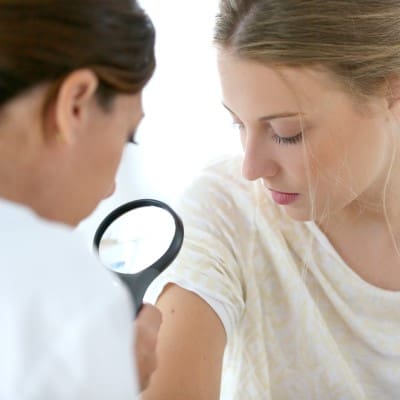Microbiome in Skin Disease: MAARS Project
- 8th December 2020
- Posted by: Claudine Gabriele
- Categories: Articles, Microbiome

The MAARS Project (Microbes in Allergy and Autoimmunity Related to the Skin) ran from 2011 to 2015 as part of the European Commission FP7 Programme. It brought together nine participating organisations (both academic and commercial) from seven countries across Europe.
The aim of the project was to study the effect of the skin microbiome on autoimmunity and allergy, using two skin diseases as examples. Allergies develop due to inadequate immune responses against foreign antigens, while inadequate immune responses against self-antigens result in the onset of autoimmunity. Skin diseases were chosen as models as the skin is often the first line of defense against microbial pathogens and is a common area for allergic and autoimmune responses to occur.
The two diseases chosen were atopic dermatitis (AD), as a surrogate for allergic diseases, and psoriasis (PSO) as a surrogate for autoimmune diseases. AD and PSO have detailed genetic risk factors with cellular and molecular changes known, however little was known about the role that the microbe-host interaction plays in relation to allergic or autoimmune responses.
Key microbes and molecular targets were identified through the project, to help develop new intervention strategies aimed at decreasing and preventing allergy and autoimmune reactions. High-throughput analysis of both microbiome and transcriptomic data allowed the relevant pathways to be analysed through our bioinformatics capabilities.
Microbes in allergy and autoimmunity
Prior to the MAARS project, it was known that imbalances in the microbial communities found in skin or infections with non-native microbes can modulate allergic or autoimmune reactions. Exactly how these imbalances had an effect remained unknown, however.
The MAARS project used human skin samples to study the skin microbiome for AD and PSO, using high-throughput sequencing to identify the various bacteria, fungi and viruses present in each sample. Once identified, the mechanisms and pathways of action for the initiation of allergic or autoimmune skin reactions were studied. Each species was assessed for its pro- or anti-inflammatory role in AD and PSO progression.
Overall
The MAARS project combined transcriptomics and genetics with microbiome research, to dive deeper into the understanding of how allergy and autoimmunity relate to skin diseases. This can play a key role in understanding other microbiome-related disorders, whether related to skin or other research areas. The molecular targets and key microbes identified through the project allowed for novel intervention strategies to be produced, which could delay the onset of these diseases and improve patients’ quality of life.
Whitepaper: An Introduction to the Microbiome: Challenges and Resolutions for Research
In this whitepaper we discuss challenges and resolutions in microbiome research, alongside what is expected to happen in the future in this high-growth area.
Learn more
Find out more about the results from the MAARS project here.
Read papers published as part of the project on our Publications page.
Leave a Reply
You must be logged in to post a comment.

